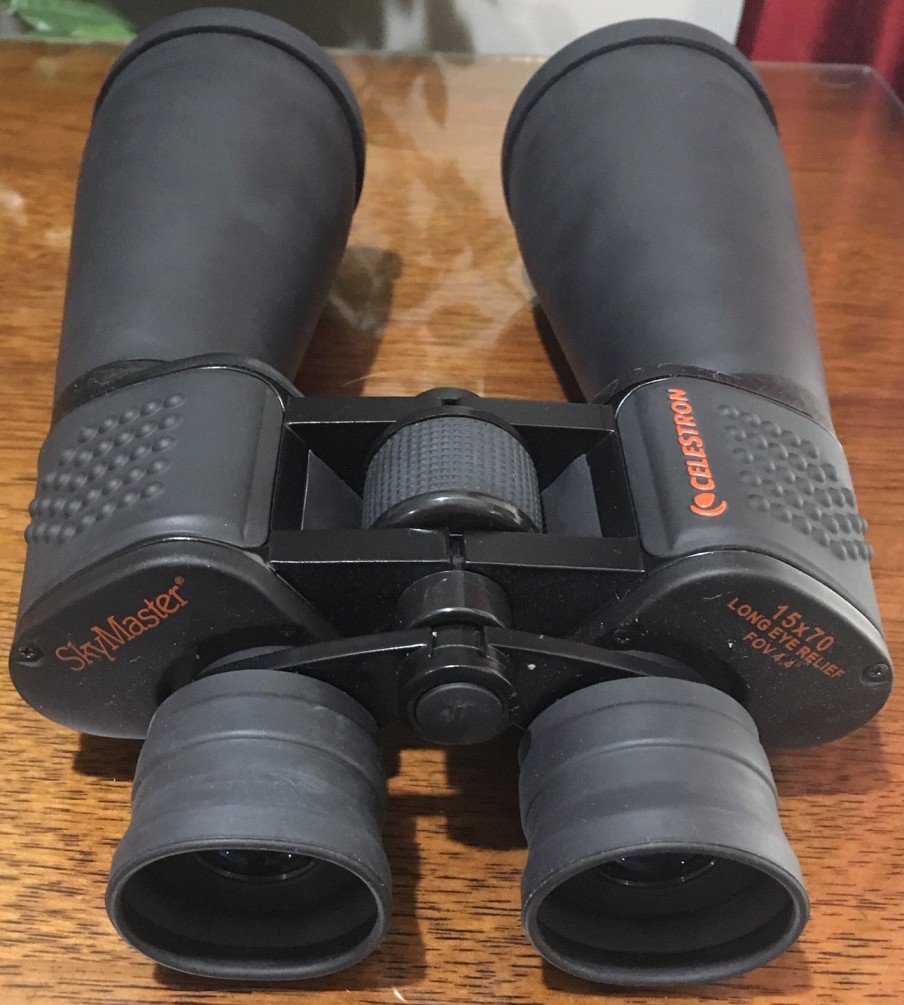
JeffPo's Binoculars Page
Last update: 09/02/19
While telescopes really let you zoom in on the details, you'd be amazed at how much you can see with a pair of binoculars. Binoculars can show you craters on the moon, the moons of Jupiter, and the brighter deepsky objects. Many star clusters, nebula, and galaxies are within the range of binoculars. Plus you can just see more stars with them. I love to lay back and just pan the sky with my binoculars, pausing to investigate anything interesting that drifts into view. I'll also hunt down specific objects too.
While any binoculars can be turned toward the night sky, some are better suited than others. Like a telescope, bigger objectives mean brighter images. I generally recommend a 7 x 50 pair, or a 10 x 50 pair. 7 and 10 are the magnifications, while 50mm is the objective diameter. If you go too much bigger, and with more power, the binoculars get hard to hold steady, and can be tiring to hold. A smaller image is better than a bigger shaky one. Of course, you can get bigger ones if you want. It's all up to you and what you can handle. You can also mount binoculars on a tripod for a stable view. Until I bought dedicated astronomy binoculars, I routinely used a 7 x 35 pair, and a 10 x 50 pair, with great results.
You'll find that a quality pair of binoculars can be quite pricey. Several hundred dollars for the top namebrands. Don't be discouraged if all you can afford are the low end Tasco and Jason style binoculars from Walmart. They'll still allow you to see things you wouldn't otherwise be able to. I have found that a smaller binocular of better quality will out perform a bigger binocular of lesser quality. While Nikon's aren't the top binoculars, they are a significant step up from the very bottom, and make great binoculars for the night sky. The main difference between good binoculars and "bad" binoculars is the clarity of the image. Good binoculars will focus stars to a pinpoint, and the stars will be in focus at the edge of the field of view too. Bad binoculars might have a softer focus, and the stars on the edge of the field of view will be even worse. And in between the very good, and the very bad, are the binoculars I can afford. They still give good enough views.
Below you'll see the binoculars I use most often.
Binoculars

These are my Orion Mini Giant 9 x 63 binoculars. These are the first ones I specifically bought for astronomy and the ones I use most often. They're rubber coated and not too heavy. They give great views of the night sky and also are great for terrestrial viewing.

These are my Celestron SkyMaster 15 x 70 binoculars. Just by the numbers you can see that they have bigger objectives, and the power is almost double when compared to my Orion Mini Giant 9 x 63 binoculars. However, I have found that I use the Orion binoculars more often. They're easier to hold steady, and have better optics, thus giving a slight sharper view. These binoculars still work great, and I do use them, especially when I want the brighter and more zoomed in image.

These are my Nikon Prostaff 7S 10 x 42 binoculars. I actually bought these for using while hunting, and that's where I mostly use them. And for terrestrial viewing. However, I have found that due to the good optics, they perform very well on the night sky. So every now and then I'll use these as they are very light weight and relatively compact.